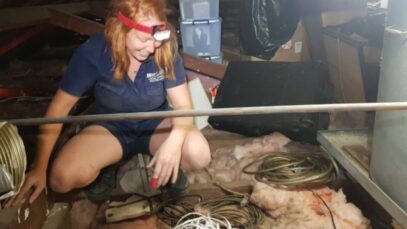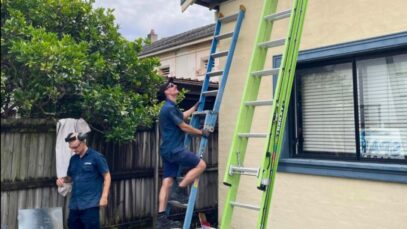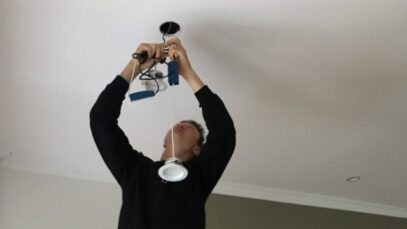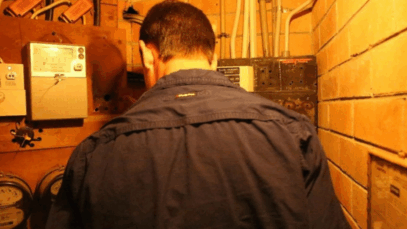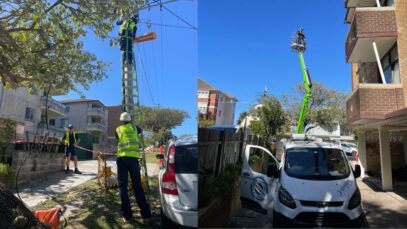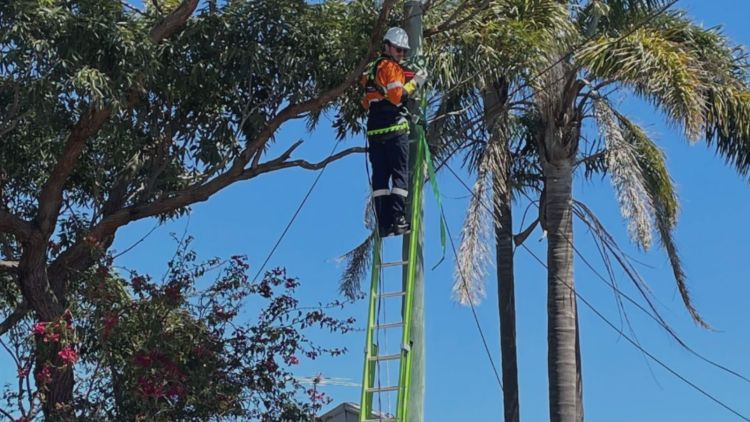
Power poles are a vital part of Australia’s electrical infrastructure, ensuring that electricity is distributed safely and efficiently to homes and businesses. Only accredited Level 2 electricians, like those at Sparky Nearby, are authorised to install and maintain these power poles.
Level 2 electricians in Sydney undergo specialised training to acquire the necessary skills and techniques to work with live wires. They are licensed to work on both private and public power poles and are equipped with the latest tools to handle the job seamlessly. In this article, we explore the five different types of power poles commonly found in Australia.
1. Network Power Pole
Network power poles are the backbone of the electricity distribution network. They accommodate large electrical cables that run along the streets, connecting various properties to the main power grid. These poles are also used to support communication cables and street lighting where necessary. The responsibility for installing and maintaining network power poles falls on network operators such as Ausgrid.
2. Lead-in Power Pole
Lead-in power poles are designed to transmit power lines across roads rather than along them. Positioned across the road from a network power pole, these poles typically have one connection to the network pole and multiple connections to houses on the roadside.
They function like multi-socket adapters, distributing power from a single source to several homes. Lead-in power poles help keep aerial cables above the road before they descend to attachment points on properties.
3. Private Power Pole
Private power poles are smaller poles installed on private property. They serve several purposes, including providing safe access to the point of attachment, facilitating the transition of aerial cables, and ensuring that aerial cables are at an appropriate height. Homeowners are responsible for the maintenance of the wires running from their private power pole to the network or lead-in pole.
4. Telecommunications Pole
Telecommunications poles are installed by telecommunications companies to support their network cables. These poles are typically erected in areas where there is no existing electrical network pole that can be used for this purpose. The installation and upkeep of telecommunications poles are solely the responsibility of the telecommunications network operators.
5. Temporary Power Pole
Temporary power poles are essential for construction sites, providing a temporary connection to the power network. These poles, which are a type of private pole, are equipped with a metre box that serves as a power outlet and metering equipment, allowing electricity to be used during the construction of a property or structure.
Once construction is complete, the temporary power pole can either be dismantled or converted into a permanent private pole to supply power to the finished building. The property owner is responsible for the temporary power pole and the cables connecting it to the network or lead-in pole.
Ensuring Safety and Efficiency
The different types of power poles each play a crucial role in maintaining a reliable and safe electrical supply. Proper installation and maintenance are vital, which is why only accredited level 2 electricians should handle these tasks. Their specialised training and equipment ensure that all work is carried out safely and efficiently, minimising the risk of accidents and ensuring a continuous power supply.
For any power pole installation or maintenance needs, you can trust our expertise. Our team of certified Level 2 electricians in Matraville, Bexley, Kogarah, Petersham, and Newtown are here to ensure your electrical infrastructure is safe, reliable, and up to the highest standards. Contact us today!
Recent Posts
Follow Us
Our Services
SERVING THE EASTERN SUBURBS AND GREATER SYDNEY AREA FOR 52 YEARS
You can reach us for 24/7 emergency services and all electrical services in Sydney.



